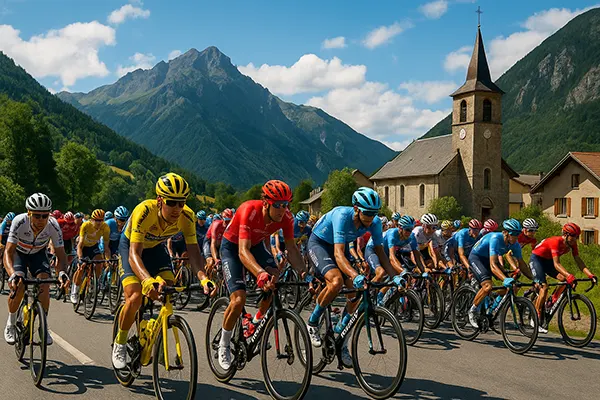How Rangers Beat Celtic in Last Old Firm Scottish Cup Final

In the latest Old Firm Scottish Cup final, Rangers emerged victorious against Celtic in a thrilling encounter that showcased the intense rivalry and high stakes of Scottish football. This match, held at Hampden Park, will be remembered as a classic due to the strategic brilliance, resilience, and standout performances from key players on both sides. Here’s a detailed breakdown of how Rangers managed to clinch the title.
Dominant First Half Performance
Rangers set the tone early in the game with an aggressive and high-tempo style of play. They pressed Celtic hard, disrupting their rhythm and preventing them from settling into their usual passing game. Rangers’ midfield, led by their captain, was instrumental in controlling the pace and flow of the game. Their early dominance was rewarded when they scored the opening goal in the 25th minute, a well-executed set-piece that left Celtic’s defence scrambling.
The opening goal gave Rangers the confidence to continue their aggressive approach. Their defence remained solid, with their centre-backs effectively neutralizing Celtic’s attacking threats. Rangers’ tactical discipline and compact structure were key to their successful first half, limiting Celtic to a few half-chances and maintaining their lead going into the break.
Celtic’s Resurgence and Rangers’ Resilience
The second half saw Celtic come out with renewed vigour, aiming to overturn the deficit. Their adjustments at halftime included a more direct approach and quicker transitions, which initially put Rangers on the back foot. Celtic’s persistence paid off when they equalized through a well-taken goal by their star forward. The momentum seemed to be shifting in Celtic’s favour as they piled on the pressure, looking for a second goal.
However, Rangers displayed remarkable resilience and composure under pressure. Their goalkeeper made several crucial saves to keep them in the game, and their defence stood firm against Celtic’s relentless attacks. Rangers’ ability to absorb the pressure and stay disciplined was a testament to their preparation and mental toughness. Despite Celtic’s dominance in the second half, Rangers managed to weather the storm and keep the score level, forcing the game into extra time.
Decisive Moments in Extra Time
Extra time was a true test of endurance and tactical acumen for both teams. Rangers’ manager made strategic substitutions that proved to be pivotal. Fresh legs and tactical tweaks allowed Rangers to regain some control and pose a threat on the counter-attack. The decisive moment came in the second half of extra time when Rangers capitalized on a defensive lapse by Celtic. A swift counter-attack ended with a clinical finish, giving Rangers the lead once again.
Holding On to the Lead
After regaining the lead, Rangers adopted a more conservative approach, focusing on maintaining their defensive solidity and managing the clock. They employed effective game management techniques, utilizing possession to reduce Celtic’s opportunities and disrupt their attacking momentum. Rangers’ disciplined defensive structure and strategic use of substitutions to maintain energy levels were critical in withstanding Celtic’s final onslaught.
The final minutes of extra time were tense, with Celtic throwing everything forward in search of an equalizer. Rangers’ defence, however, held firm, and their goalkeeper made a couple of vital saves to preserve their lead. The final whistle triggered jubilant celebrations from Rangers’ players, staff, and fans, marking a memorable victory in the storied history of the Old Firm rivalry.

Key Players and Tactical Insights
Several key players stood out in Rangers’ triumph. The captain’s leadership and midfield dominance were crucial, while the goalkeeper’s heroics provided a solid foundation. Defensively, Rangers were organized and disciplined, with their centre-backs putting in commanding performances. The tactical decisions by Rangers’ manager, particularly the timing and impact of substitutions, also played a significant role in their success.
From a tactical perspective, Rangers’ ability to adapt their game plan and respond to Celtic’s adjustments was noteworthy. Their high pressing in the first half set the tone, while their resilience and game management in the second half and extra time ensured they could withstand Celtic’s pressure and seize their opportunities.
Implications
Rangers’ victory in the Old Firm Scottish Cup final not only added another prestigious trophy to their cabinet but also reinforced their status as a formidable force in Scottish football. The win was a testament to their tactical discipline, mental resilience, and the ability to perform under pressure. For Celtic, the defeat was a bitter pill to swallow, highlighting areas for improvement in both tactical execution and mental fortitude in high-stakes matches.
This classic encounter will be remembered as one of the great Old Firm battles, exemplifying the passion, intensity, and drama that define this historic rivalry. Both teams will undoubtedly build on this experience as they continue to compete for dominance in Scottish football.




